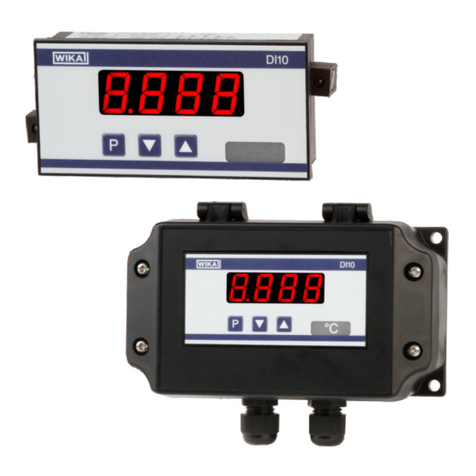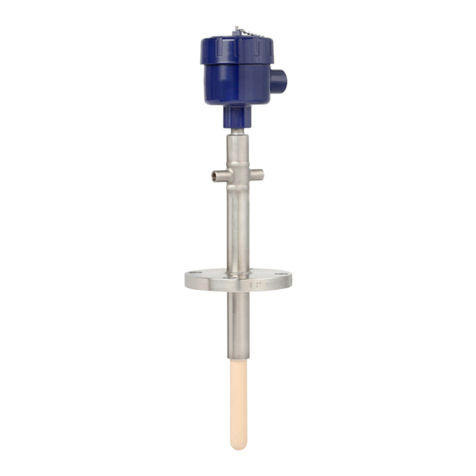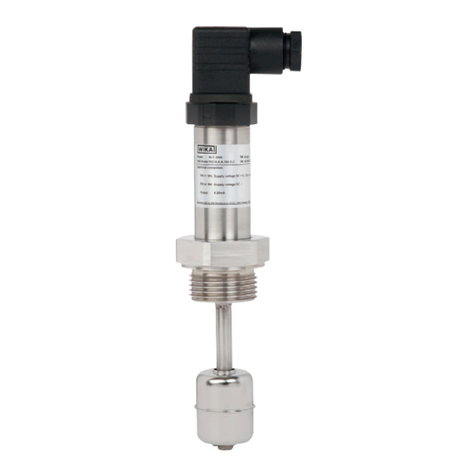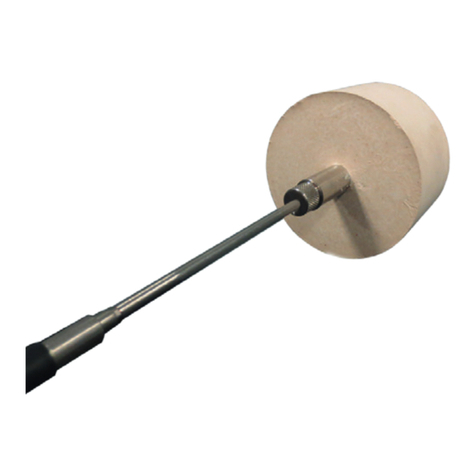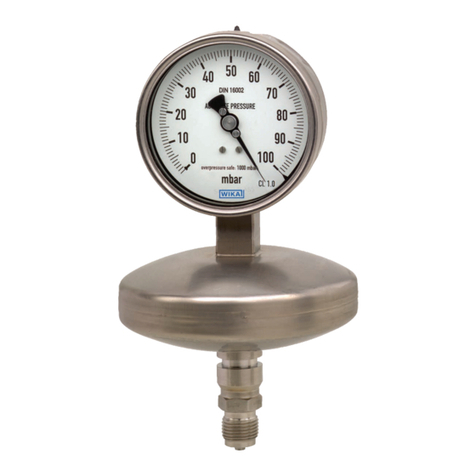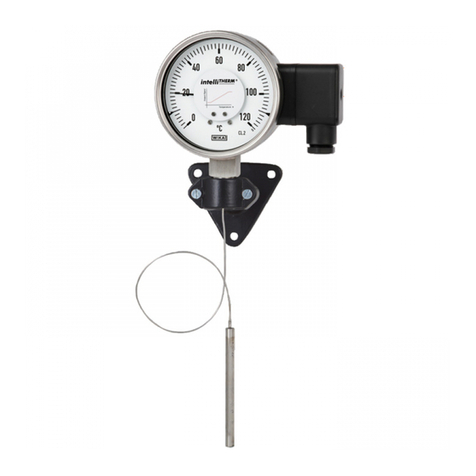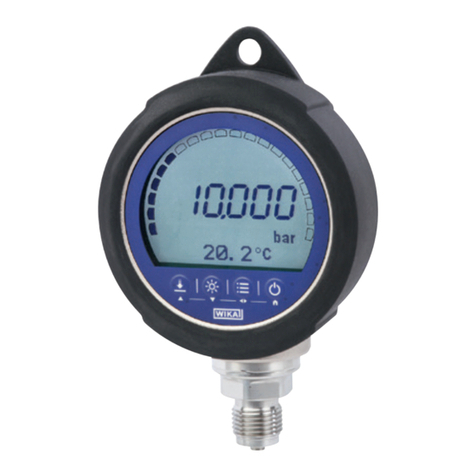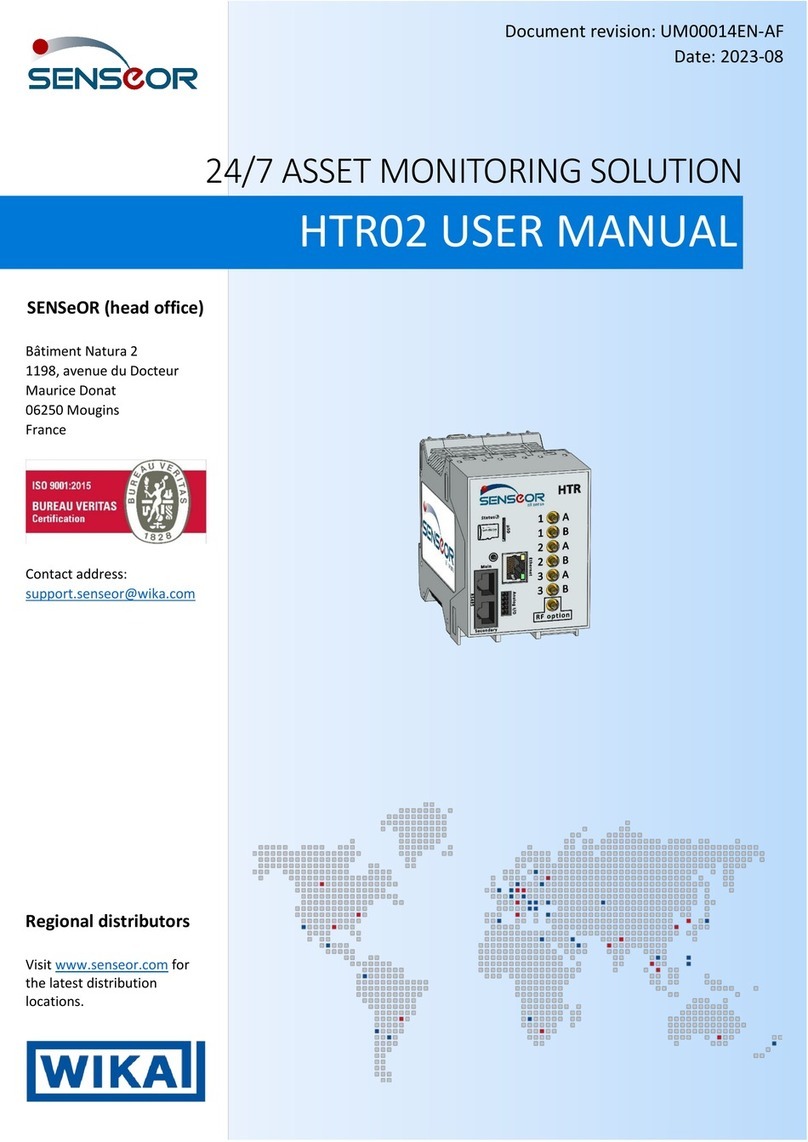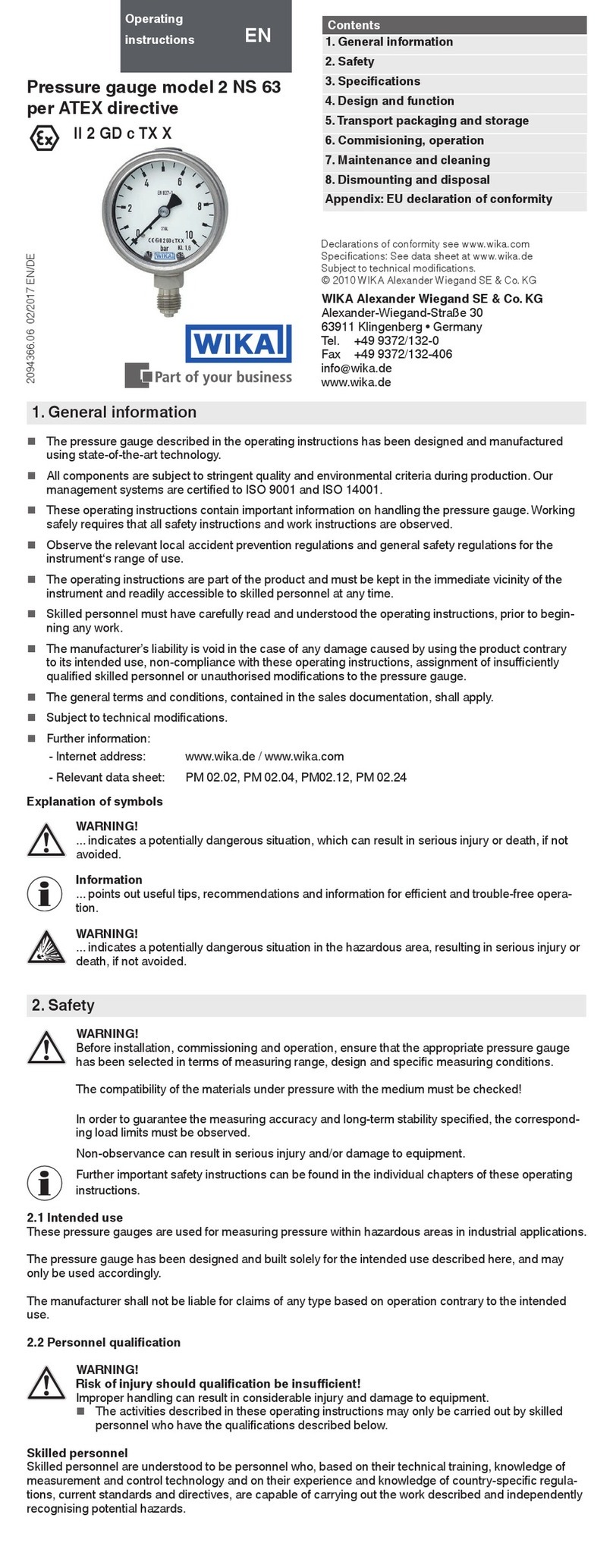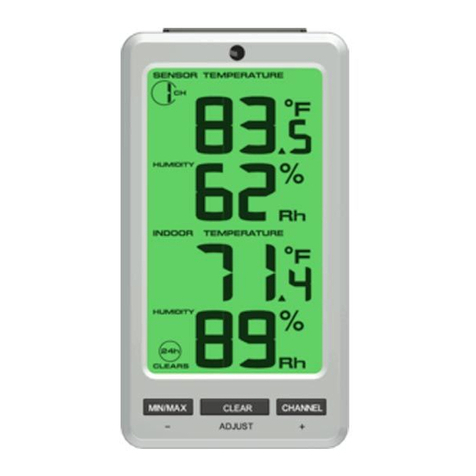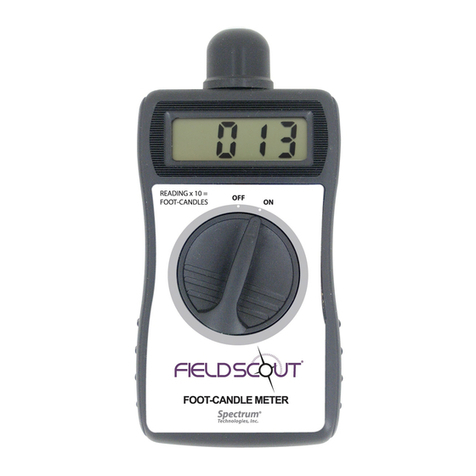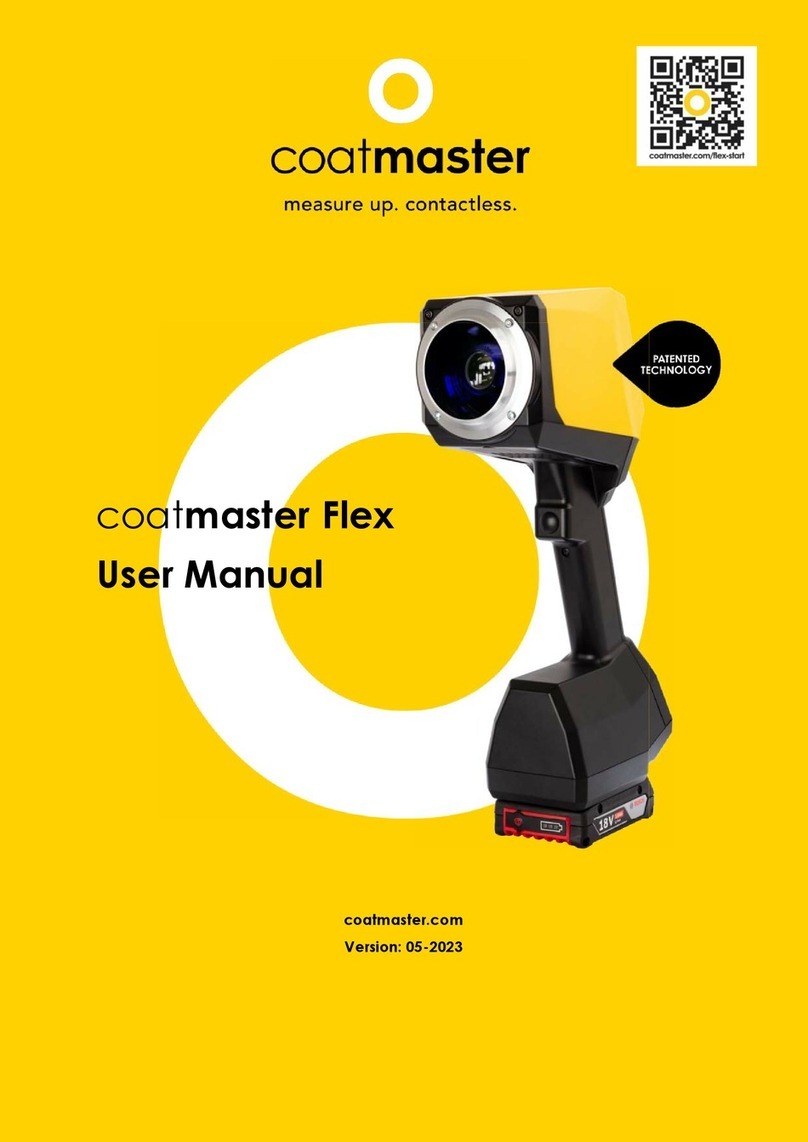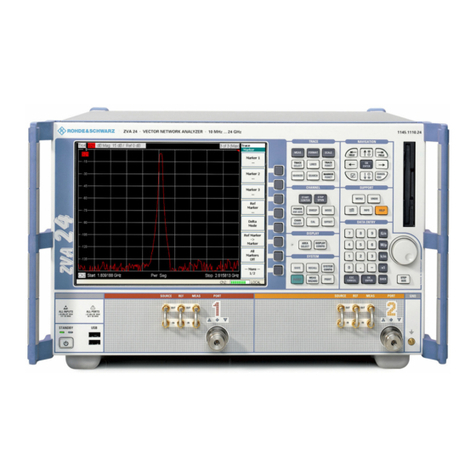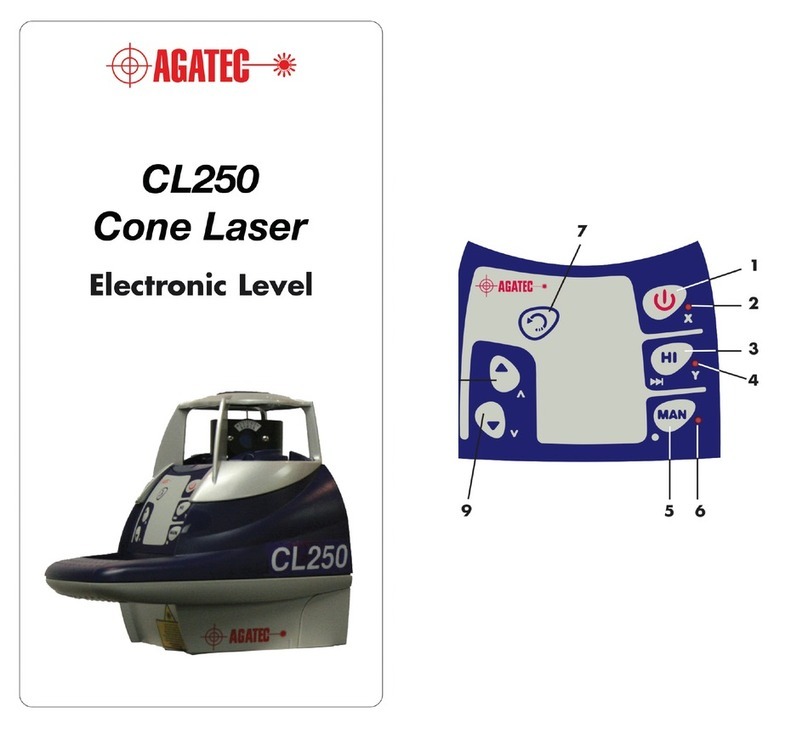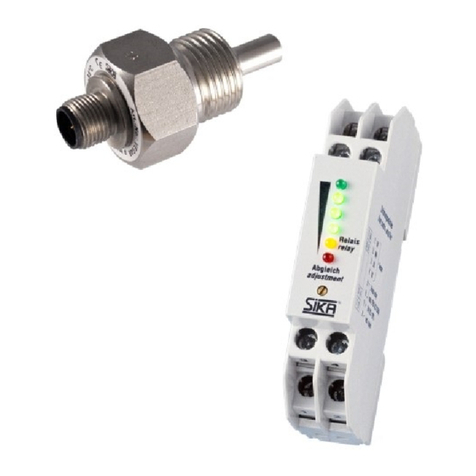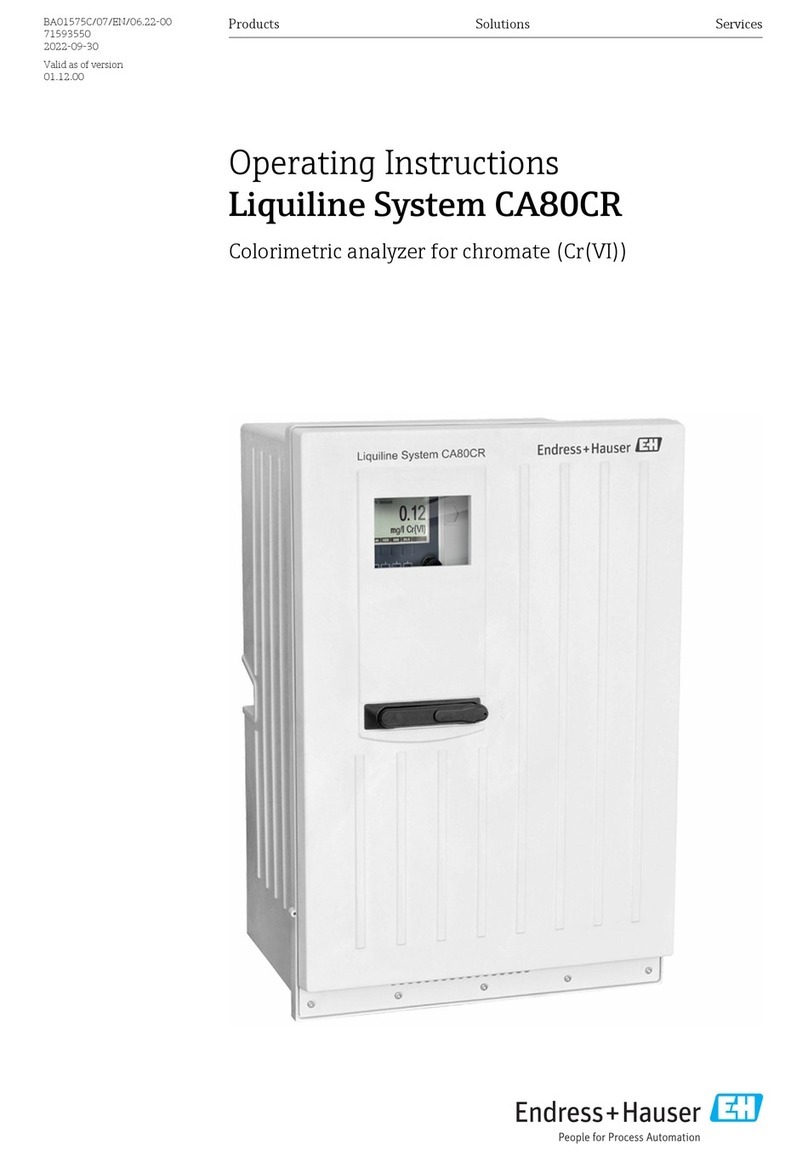WIKA DMSU21SA User manual

Operating instructions
Betriebsanleitung
EN
DE
Example of diaphragm monitoring system, model DMSU21A
Diaphragm monitoring system with HART®protocol
Model DMSU21SA, for sanitary applications
Membranüberwachungssystem mit HART®-Protokoll
Typ DMSU21SA, für die sterile Verfahrenstechnik

2
14431243.02 09/2021 EN/DE
WIKA operating instructions, model DMSU21SA
EN
DE
© 09/2021 WIKA Alexander Wiegand SE & Co. KG
All rights reserved. / Alle Rechte vorbehalten.
WIKA®is a registered trademark in various countries.
WIKA®ist eine geschützte Marke in verschiedenen Ländern.
Prior to starting any work, read the operating instructions!
Keep for later use!
Vor Beginn aller Arbeiten Betriebsanleitung lesen!
Zum späteren Gebrauch aufbewahren!
Lire le mode d‘emploi avant de commencer toute opération !
A conserver pour une utilisation ultérieure !
¡Leer el manual de instrucciones antes de comenzar cualquier trabajo!
¡Guardar el manual para una eventual consulta!
Operating instructions model DMSU21A Page 3 - 68
Betriebsanleitung Typ DMSU21A Seite 69 - 134
Further languages can be found at www.wika.com.

3WIKA operating instructions, model DMSU21A
EN
14431243.02 09/2021 EN/DE
Contents
Contents
1. General information 6
2. Design and function 7
2.1 Overview, diaphragm monitoring system . . . . . . . . . . . . . . . . . 7
2.2 Description . . . . . . . . . . . . . . . . . . . . . . . . . . . 7
2.3 Scope of delivery . . . . . . . . . . . . . . . . . . . . . . . . . 9
3. Safety 10
3.1 Explanation of symbols . . . . . . . . . . . . . . . . . . . . . . 10
3.2 Intended use. . . . . . . . . . . . . . . . . . . . . . . . . . 10
3.3 Improper use . . . . . . . . . . . . . . . . . . . . . . . . . 11
3.4 Responsibility of the operator with Ex version . . . . . . . . . . . . . . 11
3.5 Personnel qualification . . . . . . . . . . . . . . . . . . . . . . 12
3.6 Labelling, safety marks . . . . . . . . . . . . . . . . . . . . . . 13
3.7 Ex marking (option) . . . . . . . . . . . . . . . . . . . . . . . 15
3.8 Supplementary safety instructions for hazardous areas . . . . . . . . . . . 15
3.9 Compliance with 3-A conformity . . . . . . . . . . . . . . . . . . . 16
3.10 Compliance with EHEDG conformity . . . . . . . . . . . . . . . . . 16
4. Transport, packaging and storage 17
4.1 Transport . . . . . . . . . . . . . . . . . . . . . . . . . . . 17
4.2 Packaging . . . . . . . . . . . . . . . . . . . . . . . . . . 17
4.3 Storage . . . . . . . . . . . . . . . . . . . . . . . . . . . 17
5. Commissioning, operation 18
5.1 Supplementary safety instructions for hazardous areas . . . . . . . . . . . 18
5.2 Mechanical mounting. . . . . . . . . . . . . . . . . . . . . . . 18
5.2.1 Requirements for mounting point .....................................18
5.2.2 Installation .......................................................19
5.3 Mounting instructions for diaphragm seal systems with EHEDG and 3-A . . . . . 19
5.4 Commissioning . . . . . . . . . . . . . . . . . . . . . . . . . 20
5.5 Electrical mounting . . . . . . . . . . . . . . . . . . . . . . . 20
5.5.1 Requirements for hazardous areas ...................................20
5.5.2 Requirements for connection cable ................................... 20
5.5.3 Opening the case..................................................21
5.5.4 Shielding and grounding ............................................21
5.5.5 Connection.......................................................22
5.6 Pin assignments . . . . . . . . . . . . . . . . . . . . . . . . 22
6. Display and operating unit 23
6.1 Design and description . . . . . . . . . . . . . . . . . . . . . . 23
6.2 Accessing/exiting the operating menu . . . . . . . . . . . . . . . . . 24
6.3 Installation/Removal . . . . . . . . . . . . . . . . . . . . . . . 24
6.4 Setting the main display . . . . . . . . . . . . . . . . . . . . . . 25
6.5 Setting the additional display . . . . . . . . . . . . . . . . . . . . 25

4WIKA operating instructions, model DMSU21A
EN
14431243.02 09/2021 EN/DE
7. Configuration via HARTinterface 27
8. Configuration via display and operating unit 28
8.1 Configuring pressure measurement . . . . . . . . . . . . . . . . . . 28
8.2 Configuring level measurement . . . . . . . . . . . . . . . . . . . 28
8.3 Configuring volume measurement . . . . . . . . . . . . . . . . . . 30
8.4 Characteristic curves . . . . . . . . . . . . . . . . . . . . . . . 32
8.5 Setting the units . . . . . . . . . . . . . . . . . . . . . . . . 33
8.5.1 Setting the pressure unit . . . . . . . . . . . . . . . . . . . . . . . . . . . . . . . . . . . . . . . . . . . . 33
8.5.2 Setting the length unit (for level measurement) ..........................34
8.5.3 Setting the volume unit .............................................34
8.5.4 Setting the density unit and density value ..............................35
8.5.5 Setting the temperature unit .........................................35
8.6 Scaling the measuring range . . . . . . . . . . . . . . . . . . . . 36
8.6.1 Performing a wet adjustment ........................................36
8.6.2 Performing a dry adjustment.........................................37
8.7 Setting the mode . . . . . . . . . . . . . . . . . . . . . . . . 38
8.8 Mounting correction (offset) . . . . . . . . . . . . . . . . . . . . 38
8.8.1 Performing a wet adjustment ........................................38
8.8.2 Performing a dry adjustment.........................................39
8.9 Setting the damping . . . . . . . . . . . . . . . . . . . . . . . 39
8.10 Write protection. . . . . . . . . . . . . . . . . . . . . . . . . 40
8.11 Activating/deactivating the write protection . . . . . . . . . . . . . . . 40
8.12 Changing the PIN . . . . . . . . . . . . . . . . . . . . . . . . 41
9. Diagnostic functions 41
9.1 Performing a pressure simulation. . . . . . . . . . . . . . . . . . . 41
9.2 Performing a current simulation . . . . . . . . . . . . . . . . . . . 42
9.3 Displaying/resetting drag pointer . . . . . . . . . . . . . . . . . . . 42
9.4 Drag pointer Pmin/Pmax . . . . . . . . . . . . . . . . . . . . . . . . . . . . 42
9.5 Drag pointer PVmin/PVmax . . . . . . . . . . . . . . . . . . . . . . . . . . . 43
9.6 Drag pointer Tmin/Tmax . . . . . . . . . . . . . . . . . . . . . . . . . . . . 43
9.7 Displaying/resetting operating time . . . . . . . . . . . . . . . . . . 43
10. Detailed settings 44
10.1 Setting the language . . . . . . . . . . . . . . . . . . . . . . . 44
10.2 Marking the measuring location (TAG) . . . . . . . . . . . . . . . . . 44
10.2.1 Setting the TAG short...............................................44
10.2.2 Setting the TAG long ...............................................45
10.3 Setting the alarm signal . . . . . . . . . . . . . . . . . . . . . . 45
10.4 Setting the signal limits . . . . . . . . . . . . . . . . . . . . . . 46
10.5 Setting the contrast of the LC display . . . . . . . . . . . . . . . . . 46
10.6 Restoring factory setting. . . . . . . . . . . . . . . . . . . . . . 46
10.7 Setting the HARTcommunication . . . . . . . . . . . . . . . . . . 47
10.7.1 Setting the short address (multidrop mode) ............................47
10.7.2 Activating/deactivating constant current ...............................47
10.8 Alarm status of diaphragm monitoring . . . . . . . . . . . . . . . . . 48
10.8.1 Alarm message at the display and operating unit ........................ 48
10.8.2 Alarm signal via HARTcommunication ...............................49
10.8.3 Alarm signal via current loop.........................................49
Contents

5WIKA operating instructions, model DMSU21A
EN
14431243.02 09/2021 EN/DE
11. Instrument information 49
11.1 Displaying measuring range . . . . . . . . . . . . . . . . . . . . 49
11.2 Displaying date of manufacture . . . . . . . . . . . . . . . . . . . 50
11.3 Displaying firmware version. . . . . . . . . . . . . . . . . . . . . 50
11.4 Displaying serial number . . . . . . . . . . . . . . . . . . . . . 50
12. Cleaning, maintenance and recalibration 51
12.1 Cleaning of diaphragm monitoring system. . . . . . . . . . . . . . . . 51
12.2 Cleaning of diaphragm seal . . . . . . . . . . . . . . . . . . . . 51
12.3 Cleaning in place (CIP) cleaning process . . . . . . . . . . . . . . . . 52
12.4 Maintenance. . . . . . . . . . . . . . . . . . . . . . . . . . 52
12.5 Recalibration . . . . . . . . . . . . . . . . . . . . . . . . . 52
13. Faults 52
14. Dismounting, return and disposal 54
14.1 Dismounting . . . . . . . . . . . . . . . . . . . . . . . . . . 54
14.2 Return 54
14.3 Disposal . . . . . . . . . . . . . . . . . . . . . . . . . . . 54
15. Specifications 55
15.1 Permissible temperature ranges for Ex versions. . . . . . . . . . . . . . 56
15.2 Voltage supply . . . . . . . . . . . . . . . . . . . . . . . . . 56
15.3 Measuring range . . . . . . . . . . . . . . . . . . . . . . . . 56
15.4 Accuracy specifications . . . . . . . . . . . . . . . . . . . . . . 57
15.5 Operating conditions . . . . . . . . . . . . . . . . . . . . . . . 57
15.6 Display and operating unit, model DI-PT-U . . . . . . . . . . . . . . . 58
15.7 Output signal . . . . . . . . . . . . . . . . . . . . . . . . . 58
15.8 Electrical connections . . . . . . . . . . . . . . . . . . . . . . 58
15.9 Reference conditions per IEC 61298-1 . . . . . . . . . . . . . . . . . 59
16. Accessories and spare parts 60
Annex 1: Menu tree, basic setting 61
Annex 1: Menu tree, basic setting 62
Annex 2: Menu tree, display 63
Annex 2: Menu tree, display 64
Annex 3: Menu tree, diagnosis 65
Annex 4: Menu tree, detailed setting 66
Annex 5: Menu tree, info 67
Annex 6: EU declaration of conformity 135
Declarations of conformity can be found online at www.wika.com
Contents

6WIKA operating instructions, model DMSU21A
EN
14431243.02 09/2021 EN/DE
1. General information
■The diaphragm monitoring system described in the operating instructions has been
designed and manufactured using state-of-the-art technology. All components
are subject to stringent quality and environmental criteria during production. Our
management systems are certified to ISO 9001 and ISO 14001.
■These operating instructions contain important information on handling the instrument.
Working safely requires that all safety instructions and work instructions are observed.
■Observe the relevant local accident prevention regulations and general safety
regulations for the instrument's range of use.
■The operating instructions are part of the product and must be kept in the immediate
vicinity of the instrument and readily accessible to skilled personnel at any time. Pass
the operating instructions on to the next operator or owner of the instrument.
■Skilled personnel must have carefully read and understood the operating instructions
prior to beginning any work.
■The general terms and conditions contained in the sales documentation shall apply.
■Subject to technical modifications.
Further information:
- Internet address: www.wika.de / www.wika.com
- Relevant data sheet: DS 95.11
- Application consultant: Tel.: +49 9372 132-0
Fax: +49 9372 132-406
info@wika.de
1. General information

7WIKA operating instructions, model DMSU21A
EN
14431243.02 09/2021 EN/DE
2. Design and function
2.1 Overview, diaphragm monitoring system
Display and operating unit
Case head
Process transmitter
Sensor housing
Monitoring element
Process connection
Connection cable between monitoring element and process transmitter
Electrical connection
Grounding screw
Product label
2.2 Description
The process transmitter built into the diaphragm monitoring system processes the
pressure prevailing at the process connection and converts it into a current signal or a
HARTsignal.This signal can be used for the evaluation, control and regulation of the
process.
2. Design and function

8WIKA operating instructions, model DMSU21A
EN
14431243.02 09/2021 EN/DE
Diaphragm monitoring
The monitoring element is used for electrical signal transmission of the diaphragm
condition. In addition, the diaphragm condition is displayed on a dial with red/green areas.
In the event of a diaphragm rupture, the pressure monitored in the intermediate space
increases. As soon as the display of the monitoring element exceeds the predefined set
point, an optical and electrical/digital alarm signal will be output.
Version with HART(4 ... 20 mA with HART®signal)
The diaphragm monitoring system can communicate with a controller (master). Both the
measured values of the process and the diaphragm status are transmitted.
Version with current loop (4 ... 20 mA analogue signal)
In the event of a diaphragm rupture, the diaphragm monitoring system transmits the
measured values via the current loop or the analogue error signal.
→ See chapter 10.8 “Alarm status of diaphragm monitoring” for signal processing within
the process transmitter
Measuring range scaling (turndown)
The start and end of the measuring range can be set within defined ranges.
Display of monitoring element
Diaphragm intact Diaphragm rupture
2. Design and function

9WIKA operating instructions, model DMSU21A
EN
14431243.02 09/2021 EN/DE
Display and operating unit
The display and operating unit has a main and an additional display.
The main display and the additional display are able to be set in many ways. In the factory
setting, the main display shows the pressure value of the output signal and the additional
display shows the temperature at the pressure sensor.
The process transmitter can be configured via the display and operating unit.
Adaptable to mounting position
The process transmitter is fitted with a case head which can be turned through 330°.The
display and operating unit can be attached in 90° steps.Thus the measured value can be
read irrespective of the mounting position.
2.3 Scope of delivery
■Diaphragm monitoring system
■Operating instructions
Cross-check scope of delivery with delivery note.
Displaceable display and operating unit
Rotatable case head
330°
2. Design and function

10 WIKA operating instructions, model DMSU21A
EN
14431243.02 09/2021 EN/DE
3. Safety
3.1 Explanation of symbols
DANGER!
... indicates a potentially dangerous situation in the hazardous area that can
result in serious injury or death, if not avoided.
WARNING!
... indicates a potentially dangerous situation that can result in serious injury
or death, if not avoided.
CAUTION!
... indicates a potentially dangerous situation that can result in light injuries or
damage to property or the environment, if not avoided.
DANGER!
... identifies hazards caused by electrical power. Should the safety instructions
not be observed, there is a risk of serious or fatal injury.
Information
... points out useful tips, recommendations and information for efficient and
trouble-free operation.
3.2 Intended use
The diaphragm monitoring system described here is an instrument for measuring
pressure and, in addition, for monitoring the diaphragm condition.
Depending on the selected measuring range, the instrument can be used for measuring
gauge pressure/vacuum or absolute pressure.The physical quantity pressure is
converted into an electrical output signal. Depending on the selected version, the output
signal is “4 ... 20 mA with HART® signal” or a “4 ... 20 mA” current loop.
A double-diaphragm system ensures the separation of the process and the pressure
measuring instrument. In the event of a diaphragm rupture, the pressure monitored in
the intermediate space increases. As soon as the display of the monitoring element
exceeds the predefined set point, the alarm signal for a diaphragm rupture is transmitted.
Depending on the version, the alarm signal is output either via the HARTprotocol or as
an error signal on the current loop.
The measuring technology of the instrument withstands the process pressure despite
the diaphragm rupture.The measuring function of the process transmitter is maintained
without restrictions.
3. Safety

11WIKA operating instructions, model DMSU21A
EN
14431243.02 09/2021 EN/DE
Only use the instrument in applications that lie within its technical performance limits (e.g.
max. ambient temperature, material compatibility, ...). Only operate the instrument with
media that cannot damage the wetted parts.
→ For performance limits see chapter 15 “Specifications”.
Instrument versions without Ex marking are not approved for use in hazardous areas! For
instrument versions with an optional Ex approval, observe the safety instructions in this
chapter and further explosion protection instructions in these operating instructions.
The instrument has been designed and built solely for the intended use described here,
and may only be used accordingly.
The manufacturer shall not be liable for claims of any type based on operation contrary to
the intended use.
Should the operating instructions not be observed or complied with, approvals (e.g.
EHEDG) can become invalid.
3.3 Improper use
WARNING!
Injuries through improper use
Improper use of the instrument can lead to hazardous situations and injuries.
▶Refrain from unauthorised modifications to the instrument.
▶Diaphragm seal systems must not be used as a climbing aid.
Any use beyond or different to the intended use (see chapter 3.2) is considered as
improper use.
3.4 Responsibility of the operator with Ex version
For the safety of the system, the operator is obliged to carry out an ignition source
analysis.The responsibility for classification of zones lies with the plant manager and not
the manufacturer/supplier of the equipment.
These ignition sources must be taken into account for the diaphragm seal
system:
1. Hot surfaces
The surface of the diaphragm seal system can heat up due to the temperature of the
process medium.This depends on the installation situation and must be taken into
account by the operator.
3. Safety

12 WIKA operating instructions, model DMSU21A
EN
14431243.02 09/2021 EN/DE
2. Mechanically generated sparks
Mechanically generated sparks are a potential ignition source. If the materials used
exceed a total mass percentage of 7.5 % magnesium, titanium and zirconium, the
operator must take appropriate protective measures.The materials used can be found
in the instrument marking.
3. Static electricity
- To avoid electrostatic charging, the diaphragm seal system must be included in the
equipotential bonding of the system.This can be done via the grounding screw at
the process transmitter or other suitable measures.
- The diaphragm seal system can optionally contain non-conductive components
with surface coating/lining or may be marked with SPB (special bonding) or GL
(glueing) due to a special joining process. In such cases, the operator must take
appropriate measures to prevent electrostatic charging.This can, for example, be
done by equipotential bonding at several conductive points before and after the
non-conductive point.
- The operating company must ensure that the selected components of the
diaphragm seal system are suitable for use in hazardous areas.This applies in
particular to non-conductive materials (e.g. plastics).
- Metal components of the diaphragm seal system (e.g. TAG plate) must be included
in the equipotential bonding of the system during installation and operation.
4. Adiabatic compression and shock waves
With gaseous media, the temperature may increase as a result of compression
warming. In these cases it may be necessary to throttle the rate of change of pressure
or reduce the permissible medium temperature.
5. Chemical reactions
The operator must ensure that chemical reactions between wetted parts, process
medium and environment are excluded.The materials used can be found in the instru-
ment marking.
3.5 Personnel qualification
WARNING!
Risk of injury should qualification be insufficient
Improper handling can result in considerable injury and damage to property.
▶The activities described in this document may only be carried out by skilled
personnel who have the qualifications described below.
3. Safety

13WIKA operating instructions, model DMSU21A
EN
14431243.02 09/2021 EN/DE
Skilled electrical personnel
Skilled electrical personnel are understood to be personnel who, based on their technical
training, know-how and experience as well as their knowledge of country-specific
regulations, current standards and directives, are capable of carrying out work on
electrical systems and independently recognising and avoiding potential hazards.The
skilled electrical personnel have been specifically trained for the work environment they
are working in and know the relevant standards and regulations. The skilled electrical
personnel must comply with current legal accident prevention regulations.
Special operating conditions require further appropriate knowledge, e.g. of aggressive
media.
Special knowledge for working with instruments with an optional Ex approval
The skilled electrical personnel must have knowledge of ignition protection types,
regulations and provisions for equipment in hazardous areas.
3.6 Labelling, safety marks
Product label
Model S# Serial no.
Measuring range P# Product no.
Output signal Hardware and firmware versions
Supply voltage Date of manufactureYYYY-MM
Pin assignment Model code
Additional product label for Ex version (option)
The Ex marking is located in the lower area of the sensor housing.
S#
0...16 bar
FW 1.2.3
4...20 mA
HW 1.1.0
DC 14...30 V
WIKA A. Wiegand SE & Co. KG, D-63911 Klingenberg
P#
+ : L+ - : L-
Code
03-20211A01I0EVR2U
Made in Germany
/ HART®
14474869
DMSU21SA
DMSU21SA-EAIC-BG416-1-AUAAAB-ZZZ
Prozess/Ambient Temperature:
see manual and approval documents
Ex ia IIC T6…T3 GbII 2G
IECEx BVS 15.000
1X
BVS 15 ATEX E001 X
3. Safety

14 WIKA operating instructions, model DMSU21A
EN
14431243.02 09/2021 EN/DE
Product label, display and operating unit
Model
Model code
Date of manufactureYYYY-MM
S# Serial no.
Symbols
Before mounting and commissioning the instrument, ensure you read the
operating instructions!
Output signal
Supply voltage
Fulfilment of special recommendations
NE21 fulfils the required electromagnetic compatibility for equipment for process and
laboratory technology
NE32 fulfils the securing of information storage in the event of a power failure
NE43 fulfils the standardisation of the signal level for the failure information from
digital transmitters with analogue output
NE53 fulfils the requirement for traceability of the software versions of field
instruments
NE107 fulfils the self-monitoring and diagnostics of field instruments
Made in Germany
WIKA A. Wiegand SE & Co. KG D-63911 Klingenberg
DI-PT
DI-PT-UYZZZ-Z
3. Safety

15WIKA operating instructions, model DMSU21A
EN
14431243.02 09/2021 EN/DE
3.7 Ex marking (option)
DANGER!
Danger to life due to loss of explosion protection
Non-observance of these instructions and their contents may result in the loss
of explosion protection.
▶Observe the safety instructions in this chapter and further explosion
protection instructions in these operating instructions.
▶Observe the information given in the applicable type examination
certificate and the relevant country-specific regulations for installation and
use in hazardous areas (e.g. IEC 60079-14, NEC, CEC).
Ex marking per
2014/34/EU
Ex marking per ISO 80079-36/37
II 2 G Ex ia IIC T6 ... T3 Gb
Check whether the classification is suitable for the application. Observe the relevant
national regulations.
3.8 Supplementary safety instructions for hazardous areas
DANGER!
Leakage of system fill fluid in case of diaphragm rupture
In the event of a diaphragm rupture of both diaphragms, the system fill fluid
may enter the process medium and come into contact with non-wetted parts
of the instrument.
The effects of this fault on the safety of the system shall be assessed by the
operator.
▶Please observe the flash point and ignition temperature of the system fill
fluid. See table below.
▶Selection of suitable materials to exclude ignitable chemical reactions of
the components of the diaphragm seal system with the process medium.
Flash point and ignition protection of system filling
System ll uid Flash point Ignition temperature
KN2 Silicone oil Element 14 PDMS > 300 °C [572 °F] n. a.
KN7 Glycerine with FDA approval > 170 °C [338 °F] n. d.
KN17 Silicone oil PD5 > 100 °C [212 °F] > 420 °C [788 °F]
KN21 Halocarbon 1) n. a. n. a.
3. Safety

16 WIKA operating instructions, model DMSU21A
EN
14431243.02 09/2021 EN/DE
System ll uid Flash point Ignition temperature
KN30 Methylcyclopentane -29 °C [-20.2 °F] > 320 °C [608 °F]
KN32 High-temperature silicone oil > 210 °C [410 °F] n. d.
KN57 Caustic soda 20 % 2) n. a. n. a.
KN59 Noebee®M-20 1) > 170 °C [338 °F] n. a.
KN64 DI water n. a. n. a.
KN68 Silicone oil DOW C 200, 10CST 100 °C [212 °F] n. a.
KN75 DI water / propanol 12 °C [53.6 °F] > 420 °C [788 °F]
KN92 Medicinal white mineral oil > 170 °C [338 °F] > 310 °C [590 °F]
1) not self-igniting
2) not flammable
n. a. = not applicable
n. d. = not documented
3.9 Compliance with 3-A conformity
For a 3-A-compliant connection the following sealings have to be used:
■For milk thread fittings per DIN 11851, suitable profile sealings have to be used (e.g.
SKS Komponenten BV or Kieselmann GmbH).
■For fittings per IDF sealings with support ring per ISO 2853 have to be used.
Note: Connections per SMS, APV RJT and NEUMO Connect S are not 3-A-compliant.
3.10 Compliance with EHEDG conformity
For an EHEDG-compliant connection, sealings in accordance with the current EHEDG
policy document must be used.
Sealings for connections per ISO 2852, DIN 32676 and BS 4825 part 3 are, e.g.,
manufactured by Combifit International B.V.
A manufacturer of sealings for connections per DIN 11851 is, e.g., Kieselmann GmbH.
3. Safety

17WIKA operating instructions, model DMSU21A
EN
14431243.02 09/2021 EN/DE
4. Transport, packaging and storage
4.1 Transport
Check the diaphragm monitoring system for any damage that may have been caused by
transport.The display of the monitoring element must be located in the green area.
Obvious damage must be reported immediately.
4.2 Packaging
Do not remove packaging until just before mounting.
Keep the packaging as it will provide optimum protection during transport (e.g. change in
installation site, return for calibration).
4.3 Storage
Permissible conditions at the place of storage:
■Storage temperature: -40 ... +80 °C [-40 ... +176 °F]
Avoid exposure to the following factors:
■Proximity to hot objects, when permissible storage temperature is exceeded by
radiation.
■Mechanical vibration, mechanical shock (putting it down hard), when the permissible
values are exceeded, see chapter 15 “specifications”.
■Soot, vapour, dust and corrosive gases.
■Hazardous areas and flammable atmospheres where the instruments are not suitable
for installation in or mounting to equipment in explosive atmospheres.
Store the diaphragm monitoring system in its original packaging in a location that fulfils
the conditions listed above. If the original packaging is not available, then store the
instrument in a container that is similar to the original packaging, so that the instrument
can't be scratched and is protected against damage if dropped.
4. Transport, packaging and storage

18 WIKA operating instructions, model DMSU21A
EN
14431243.02 09/2021 EN/DE
5. Commissioning, operation
The instrument may only be commissioned and operated by skilled electrical personnel.
5.1 Supplementary safety instructions for hazardous areas
DANGER!
Danger to life from explosion
Incorrect mounting and non-compliance with the contents of this chapter can
lead to a risk of explosion.
▶Carefully read and comply with the following sub-chapters.
DANGER!
Damaged diaphragm
If the diaphragm is damaged, the explosion protection is no longer
guaranteed.Through any explosion resulting from this, there will be a high
danger to life.
▶Before commissioning, the diaphragm should be checked for visible
damage. Leaking fluid is indicative of damage.
▶
Protect the diaphragm from contact with abrasive media and against any
impacts.
Observe the information given in the type examination certificate and the country-specific
regulations for installation and use in hazardous areas (e.g. IEC 60079-14, NEC, CEC). If
this is not observed, serious injuries and damage to property could occur.
The installation of the instrument should be made in such a way that the permissible
operating temperature, also considering the effects of convection and thermal radiation,
neither exceeds nor falls below the permissible limits.
5.2 Mechanical mounting
The instrument may only be installed and mounted by skilled personnel.
5.2.1 Requirements for mounting point
The display unit of the process transmitter can be adapted to the installation site.
→ See chapter 2.2 “Description”
■No hazardous environment/flammable atmosphere, except for instruments that are
explicitly suitable for installation in or mounting to equipment in explosive atmospheres.
■Mechanical vibration/mechanical shock within the permissible values, see chapter 15
“Specifications”.
■Sufficient space for a safe electrical installation.
■Operating elements can be accessed following the mounting.
■Observe the permissible medium and ambient temperatures.These are constituent
elements of the order confirmation.
5. Commissioning, operation

19WIKA operating instructions, model DMSU21A
EN
14431243.02 09/2021 EN/DE
■Protect the diaphragm monitoring system from heat sources (e.g. pipes or tanks). Do
not expose the instruments to direct solar irradiation while in operation!
■Protected against soot, vapour, dust, corrosive gases, coarse dirt and wide
fluctuations in ambient temperature. Consider possible restrictions on the ambient
temperature range caused by mating connector used.
5.2.2 Installation
The installation of the diaphragm monitoring system must be carried out in accordance
with the specifications of the respective process connection. Other installation types, e.g.
direct welding, are not permissible and are considered as improper use.
■Remove the protective cap not until shortly before installation
■Avoid any contact with or mechanical loading of the diaphragm. Scratches on the
diaphragm (e.g. from sharp-edged objects) are the main causes of corrosion.
■Sealing of the process connection
- Select suitable sealing for the respective application and diaphragm seal version.
- Centre sealing on the sealing face.
- The diaphragm movement must not be limited due to the sealing.
- When using soft or PTFE sealings, observe the instructions of the sealing manufac-
turer, particularly with regard to tightening torque and load cycles.
■For installation, the appropriate fastenings must be used. Mount these with the
prescribed tightening torque.
5.3 Mounting instructions for diaphragm seal systems with EHEDG and 3-A
Observe the following instructions, especially for EHEDG-certified and 3-A-compliant
instruments.
■To maintain the EHEDG certification, one of the EHEDG-recommended process
connections must be used.These are marked with the logo in the data sheet.
■To maintain the conformity to the 3-A standard, a 3-A-compliant process connection
must be used.These are marked with the logo in the data sheet.
■Mount the diaphragm seal system with minimal dead space and able to be cleaned
easily.
■The mounting position of the diaphragm seal system, welding socket and
instrumentation T-piece should be designed to be self-draining.
■The mounting position must not form a draining point or cause a basin to be formed.
■With the process connection via an instrumentation T-piece, the branch L of the
T-piece must not be longer than the diameter D of the T-piece (L ≤ D).
5. Commissioning, operation

20 WIKA operating instructions, model DMSU21A
EN
14431243.02 09/2021 EN/DE
5.4 Commissioning
During the commissioning process pressure surges must be avoided at all costs. Open
the shut-off valves slowly.
5.5 Electrical mounting
DANGER!
Danger to life caused by electric current
Upon contact with live parts, there is a direct danger to life.
▶The instrument may only be installed and mounted by skilled electrical
personnel.
▶Operation using a defective power supply unit (e.g. short-circuit from the
mains voltage to the output voltage) can result in life-threatening voltages
at the instrument!
5.5.1 Requirements for hazardous areas
■Power the process transmitter via an intrinsically safe circuit (Ex ia). Both the
effective internal capacitance and inductance must be considered (→ See chapter 15
“Specifications”).
■Provide the required voltage supply separation between Ex and non-Ex areas with a
certified isolated barrier or Zener barrier (suitable isolated barrier, model IS Barrier).
■- For applications that require EPL Gb, the power supply and signal circuit should
have a protection level of “ib”. Then the interconnections and the transmitter will have
a protection level of II 2G Ex ib IIC T4/T5/T6 Gb, even if the process transmitter is
marked otherwise (→ See EN 60079-14 section 5.4).
5.5.2 Requirements for connection cable
■Use and assemble connection cable that is suitable for the application. For cables with
flexible wires, always use ferrules appropriate for the wire cross-section.
■Where there is electromagnetic radiation above the test values per EN 61326, a
shielded connection cable must be used.
■When using an M12 x 1 (4-pin) circular connector, the mating connector is supplied by
the customer. Ensure the matching design from the connector manufacturer.
Electrical connections
Spring-loaded terminals Wire cross-section:
Wire or strand: 0.2 ... 2.5 mm² (AWG 24 ... 14)
Strand with end splice: 0.2 ... 1.5 mm² (AWG 24 ... 16)
Cable gland M20 x 1.5, stainless
steel in hygienic design
Cable diameter: 6 ... 12 mm [0.24 ... 0.47 in]
Angular connector DIN 175301-803A
with mating connector
Cable diameter: 6 ... 8 mm [0.24 ... 0.31 in]
Wire cross-section: max. 1.5 mm² (AWG 16)
Circular connector M12 x 1 (4-pin)
without mating connector
Observe manufacturer's specications
5. Commissioning, operation
Table of contents
Languages:
Other WIKA Measuring Instrument manuals
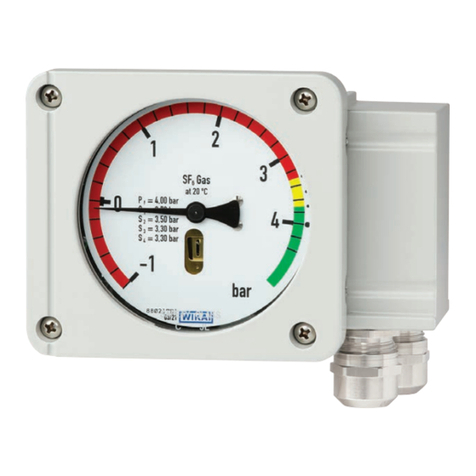
WIKA
WIKA GDM-RC-100-T User manual

WIKA
WIKA A-IAI-1 User manual
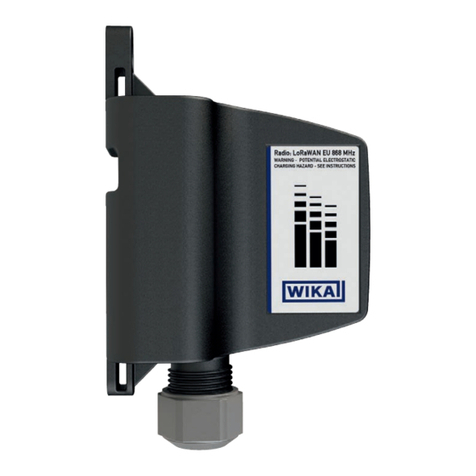
WIKA
WIKA NETRIS 3 User manual
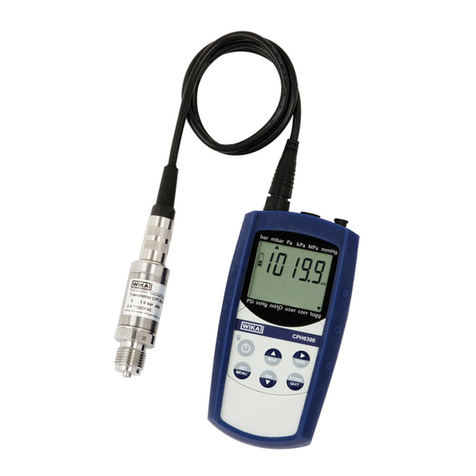
WIKA
WIKA CPH6300-S1 User manual
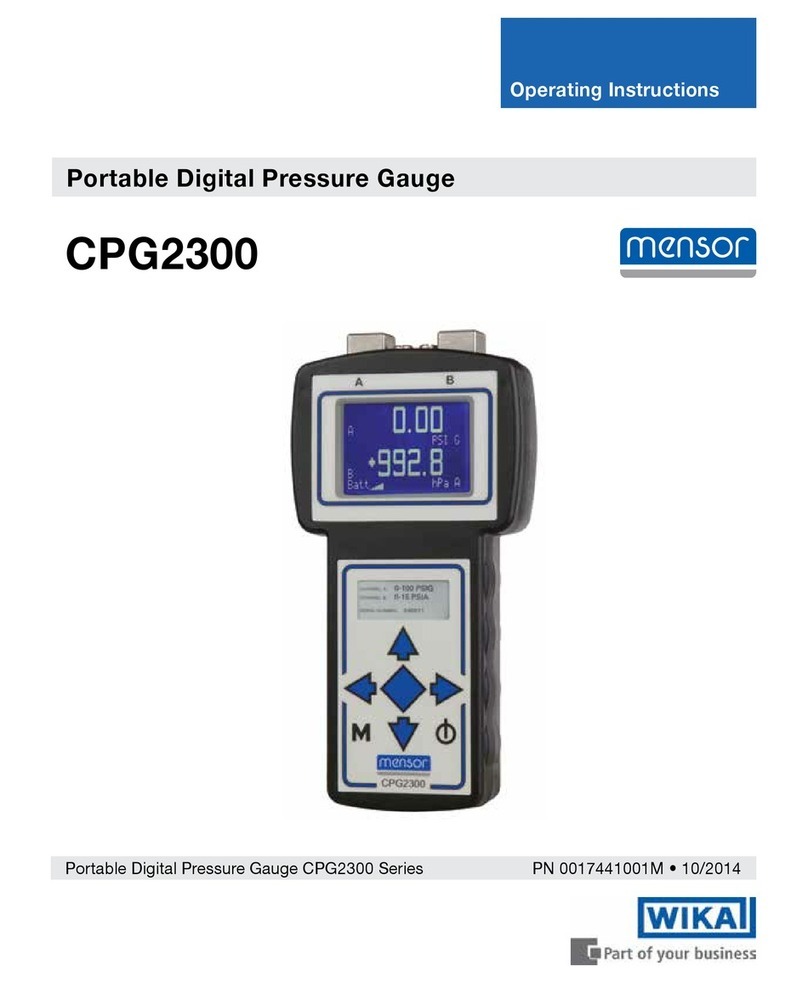
WIKA
WIKA CPG2300 Series User manual

WIKA
WIKA GDM-63 User manual
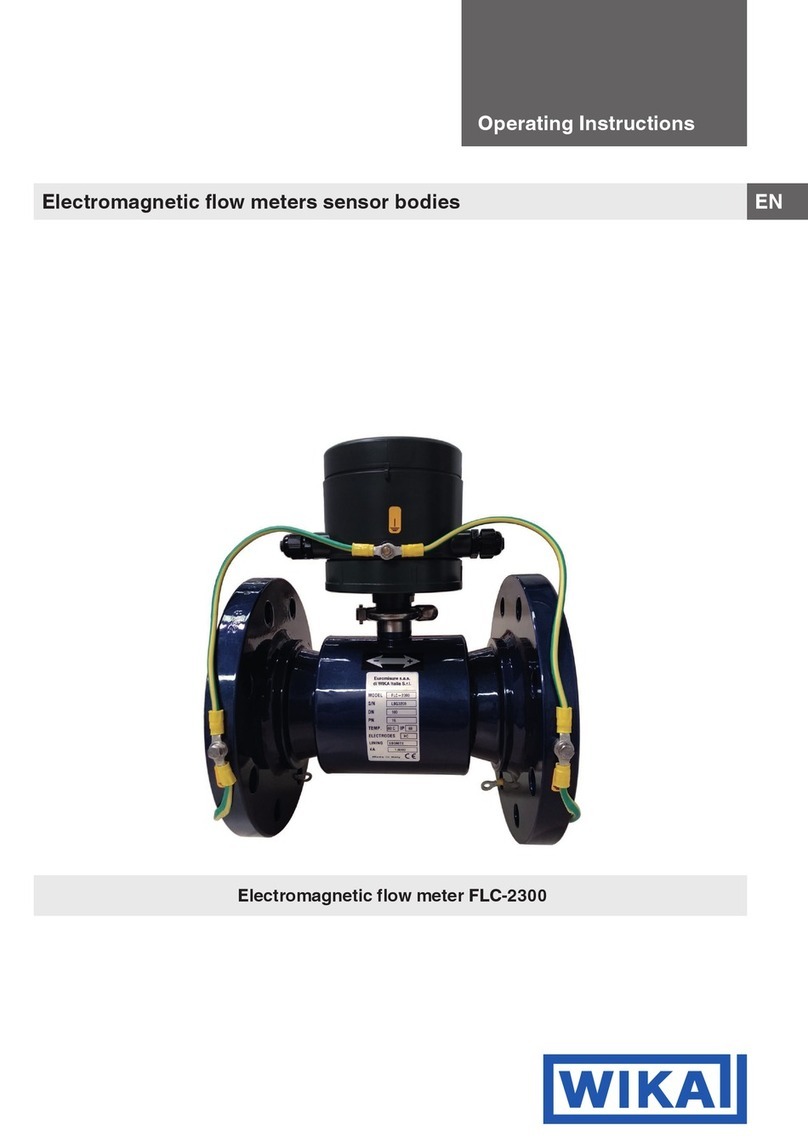
WIKA
WIKA FLC-2300 User manual

WIKA
WIKA TC82 Operating instructions

WIKA
WIKA NG 100 User manual
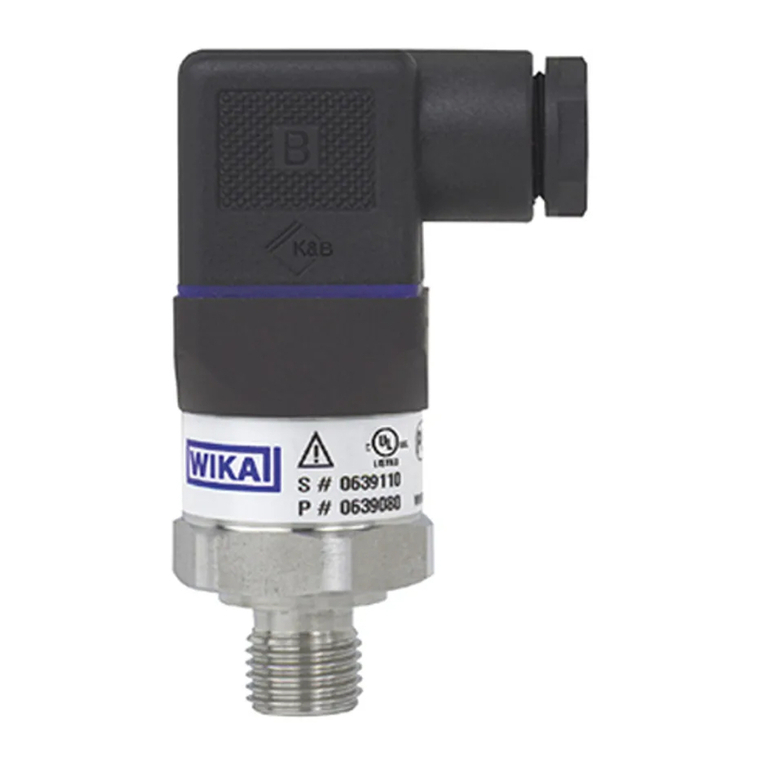
WIKA
WIKA A-10 User manual
Popular Measuring Instrument manuals by other brands
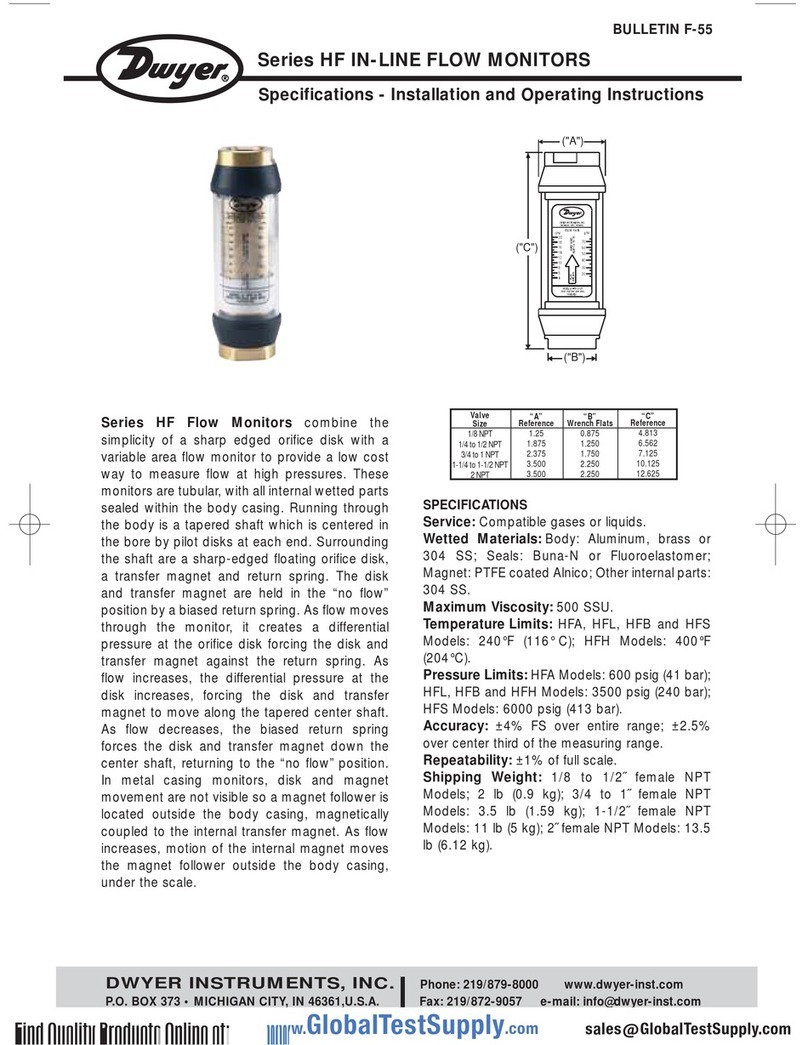
Dwyer Instruments
Dwyer Instruments HF series Specifications-installation and operating instructions
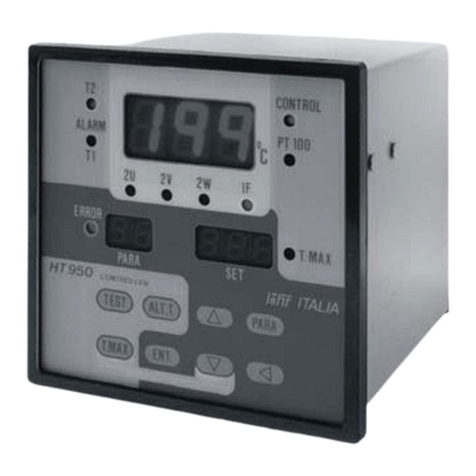
HT Italia
HT Italia HT950N user manual
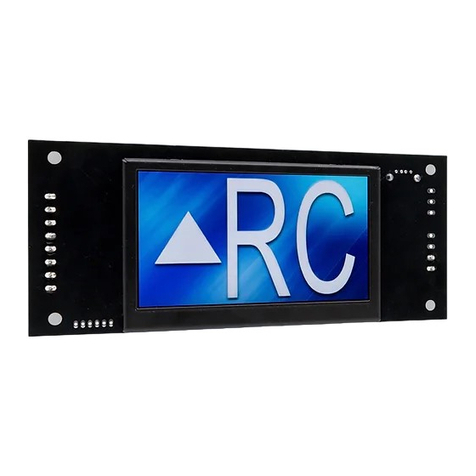
VIDA TECH
VIDA TECH F7012 installation manual
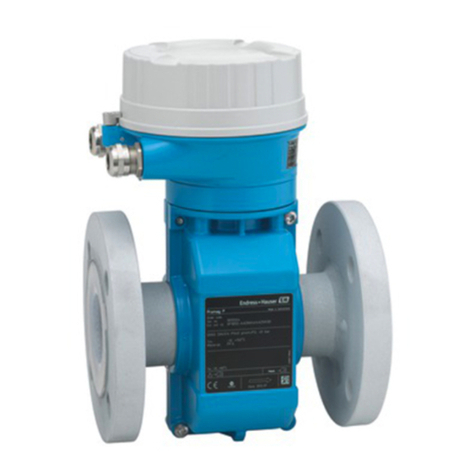
Endress+Hauser
Endress+Hauser Proline Promag P 100 operating instructions
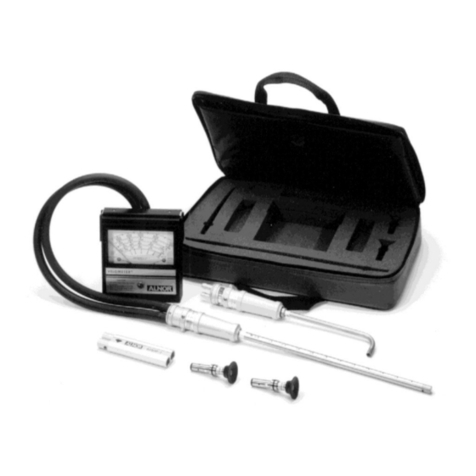
TSI Instruments
TSI Instruments Alnor Velometer 6000 Series Operation and service manual
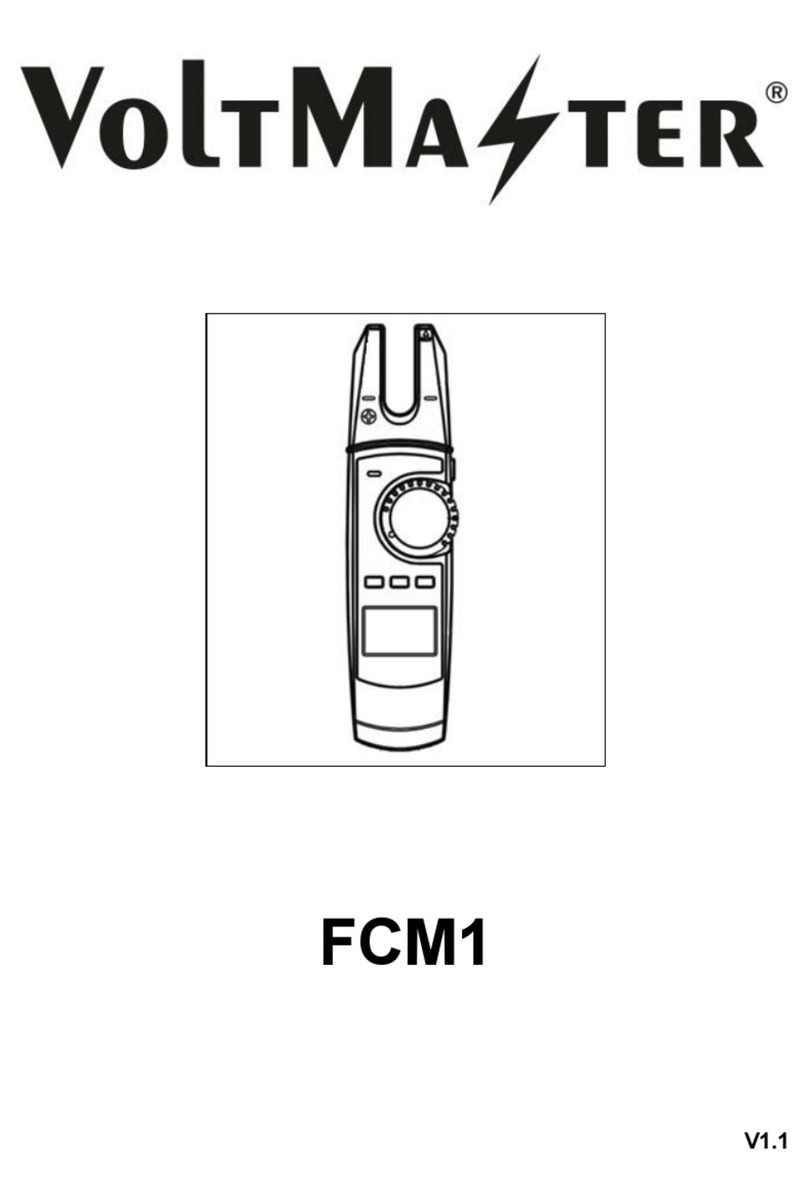
Voltmaster
Voltmaster FCM1 operating manual
